Your pine tree’s annual reproductive cycle can indicate its good health, or that you need to take action. Knowing how your pine tree reproduces can help you better care for it and give you valuable insight into its strong or declining health.
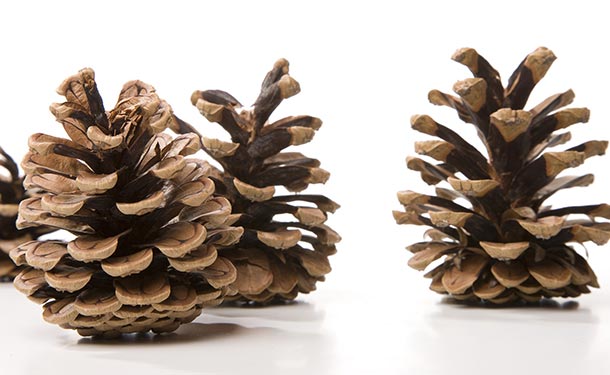
thetreecareguide.com gathered information on what pine trees do to reproduce and the startling information this process reveals.
How Do Trees Reproduce?
All forms of life share the drive to survive and reproduce. Trees are not exempt from this and have developed two main strategies to accomplish their reproduction:
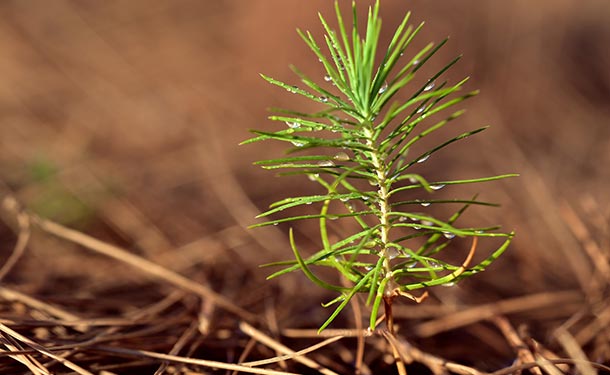
Angiosperms – These are trees that produce flowers and rely heavily on pollinating insects and wildlife to carry their genetic material from one tree to another.
Gymnosperms – These are non-flowering trees or conifers (including pine trees). These trees produce pollen as well but have different means of achieving their reproductive goal. (These trees date back to prehistoric times)
Both types of trees reproduce through seeds but have very different strategies for how that seed is produced.
Pine Tree Reproduction
For a pine tree to successfully reproduce, 3 distinct steps must take place:
Step 1 – The first step in pine tree reproduction is pollination. For pollination to happen successfully, pollen must be transferred from male cones to female cones.
While pine trees grow both male and female cones, the intention is not to self pollinate. Female cones are produced high up in the crown of the pine tree, while male cones (catkins) are produced on the branches below.
Male pine cones do not look like the pine cones many are used to seeing but are long, thin, and soft structures located in clusters on the lower branches. Male cones are only present in the spring when producing pollen.
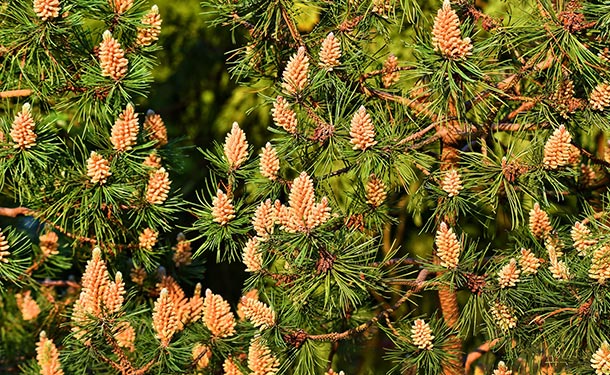
Pollen is carried from the male cones of one tree to the female cones of another by wind currents. Thus, completing the first step of reproduction.
Read more about tree pollen at thetreecareguide.com/tree-pollen-allergy-season/
Step 2 – Once the female cones have been pollinated, they will produce fertile seeds within the closed cone. It takes about two years for this step to complete itself. As the cone becomes brown, it develops scales, opens up, and resembles the familiar pine cones we all know.
At the base of each scale on a female pine cone, a seed lies waiting to be carried off by the wind or wildlife. Thus, completing the second step of the tree’s reproduction.
Step 3 – Seed dispersal is the final step in a pine tree’s reproductive cycle, and even this step displays how brilliant nature is. As the female cones open up, several species of birds and squirrels come along to feed on the seeds, potentially dispersing them miles away from the parent tree.
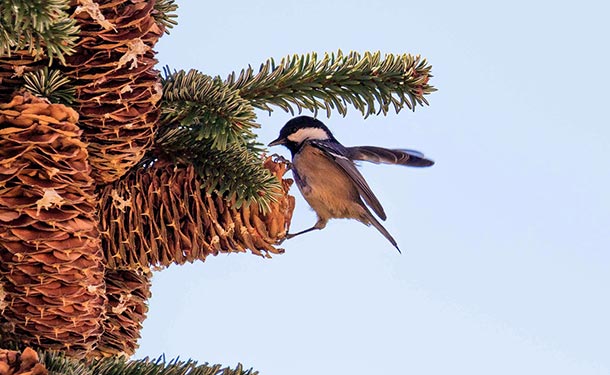
Sometimes, the pine cones are knocked off or fall off the tree. The shape and flexibility of cones allow them to bounce and roll away from its origin while dispersing its seeds.
Then there are those cones that remain closed until exposed to extremely high temperatures, like those temperatures produced in a forest fire. These cones only release seeds under such conditions, likely corresponding to the death of the parent tree in a fire.
Tip: When planting a pine tree on your property, it is smart to plant more than one. By doing this, you can all but guarantee the successful annual pollination of your trees and dispersal of viable seeds.
Pine Tree Health
The healthier you maintain your pine trees, the better they will be at reproducing annually. Likewise, when a pine tree is under stress from drought, has suffered a successful insect infestation, or has been infected by a disease, it may do something peculiar.
When your pine tree is stressed, damaged, or dying, it may produce a stress crop. A stress crop would look like an explosion of pine cones maturing in the upper branches and falling from the tree.
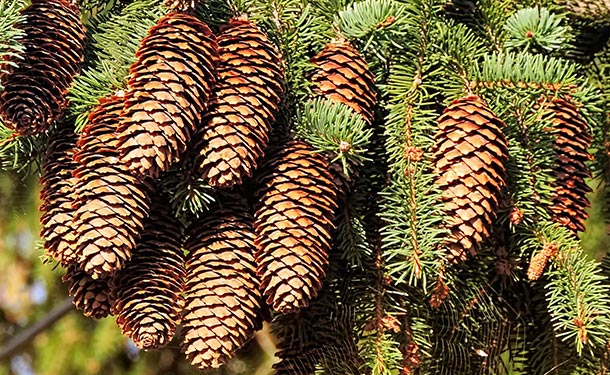
Producing a stress crop is one of the measures pine trees utilize to guarantee the continuation of their species. It also serves as an alarm bell for humans to take a closer look at the tree. Some infestations and diseases can be treated, while others may require the removal of the tree to protect other trees on or near your property.
If your pine tree is producing a stress crop or has developed signs of disease, call a professional tree service to inspect it and offer a course of action to either restore its health or remove it.
Read about how you can save a dying evergreen at thetreecareguide.com/how-to-save-dying-evergreen/
How A Pine Tree Reproduces
In this article, you discovered how pine trees reproduce and how that reproduction may indicate trouble for your tree.
By caring for your pine trees and knowing how they reproduce, you can detect signals that tell you when the tree is stressed, and when to call for help.
Ignoring your pine tree through its reproductive cycle may lead to its decline in health and eventual death.
Sources:
sciencing.com/do-pine-trees-reproduce-5173107.html
northernwoodlands.org/articles/article/do-stressed-trees-produce-more-seeds
fia.umd.edu/answer-what-causes-such-crazy-cone-and-flower-production/
apsnet.org/edcenter/disandpath/fungalbasidio/pdlessons/Pages/Armillaria.aspx
canr.msu.edu/news/fun_facts_about_pine_cones